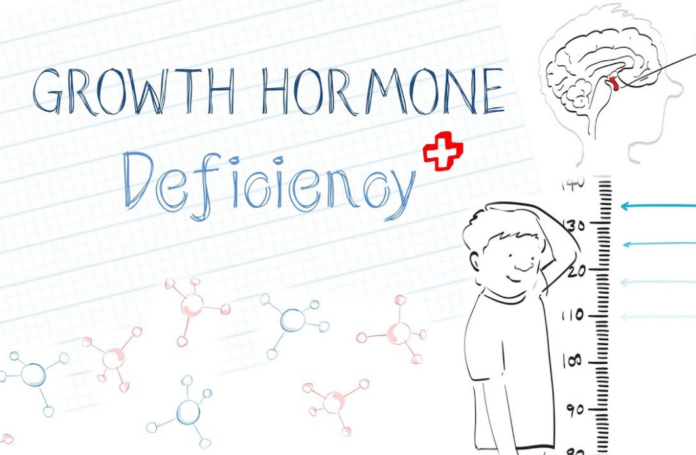Hormones are the body’s chemical messengers, playing a crucial role in regulating various physiological processes. Among the most important hormones are testosterone and estrogen, which are often associated with gender-specific traits. However, both hormones are present in all individuals, regardless of gender, and their balance is essential for overall health. In this article, we’ll explore how testosterone and estrogen levels impact your health, the consequences of imbalances, and how to maintain optimal levels for a healthier life.
Understanding Testosterone and Estrogen
Testosterone is often referred to as the “male hormone,” as it is primarily produced in the testes in men and in smaller amounts in the ovaries in women. It plays a key role in developing male reproductive tissues, promoting muscle mass, bone density, and body hair growth. Testosterone also influences mood, energy levels, and libido.
Estrogen, on the other hand, is known as the “female hormone,” produced mainly in the ovaries in women and in smaller amounts in men’s adrenal glands and fat tissues. It regulates the menstrual cycle, supports pregnancy, and maintains bone and heart health. Estrogen also affects skin elasticity, mood, and cognitive function.
While these hormones are often linked to gender-specific functions, they are vital for everyone. Imbalances in either hormone can lead to significant health issues.
The Role of Testosterone in Health
- Muscle Mass and Strength
Testosterone is critical for building and maintaining muscle mass. Low levels can lead to muscle weakness, fatigue, and decreased physical performance. This is why men with low testosterone often experience a decline in strength and endurance. - Bone Health
Testosterone helps maintain bone density. Low levels can increase the risk of osteoporosis, a condition where bones become brittle and prone to fractures. This is particularly concerning for older adults. - Mood and Mental Health
Testosterone influences mood and cognitive function. Low levels are associated with depression, irritability, and difficulty concentrating. Studies have shown that men with low testosterone are more likely to experience mental health issues. - Libido and Sexual Function
Testosterone is a key driver of sexual desire and performance in both men and women. Low levels can lead to reduced libido, erectile dysfunction in men, and sexual dissatisfaction in women. - Metabolic Health
Testosterone plays a role in fat metabolism. Low levels can lead to weight gain, particularly around the abdomen, and increase the risk of metabolic syndrome, diabetes, and cardiovascular disease.
The Role of Estrogen in Health
- Reproductive Health
Estrogen is essential for the development of female reproductive organs and the regulation of the menstrual cycle. It also prepares the body for pregnancy by thickening the uterine lining. - Bone Health
Like testosterone, estrogen is crucial for maintaining bone density. Women experiencing menopause, when estrogen levels drop, are at a higher risk of developing osteoporosis. - Heart Health
Estrogen helps maintain healthy cholesterol levels and keeps blood vessels flexible. Low estrogen levels can increase the risk of heart disease, especially in postmenopausal women. - Skin and Hair Health
Estrogen promotes collagen production, which keeps the skin firm and elastic. It also supports hair growth and thickness. Low estrogen levels can lead to dry skin, wrinkles, and hair thinning. - Mood and Cognitive Function
Estrogen influences neurotransmitters that regulate mood, such as serotonin and dopamine. Low levels are linked to mood swings, anxiety, and an increased risk of depression. Estrogen also plays a role in memory and cognitive function, with low levels being associated with a higher risk of Alzheimer’s disease.
Consequences of Hormonal Imbalances
Both high and low levels of testosterone and estrogen can have serious health implications.
Low Testosterone (Hypogonadism)
- Fatigue and low energy
- Loss of muscle mass and strength
- Increased body fat
- Depression and mood swings
- Reduced libido and sexual dysfunction
- Osteoporosis
High Testosterone
- Acne and oily skin
- Aggressive behavior
- Sleep apnea
- Increased risk of prostate cancer (in men)
- Irregular menstrual cycles (in women)
Low Estrogen
- Hot flashes and night sweats
- Vaginal dryness and painful intercourse
- Mood swings and depression
- Osteoporosis
- Increased risk of heart disease
High Estrogen
- Weight gain, especially in the hips and thighs
- Mood swings and irritability
- Heavy or irregular periods
- Increased risk of breast and uterine cancer
- Fatigue and sleep disturbances
Factors Affecting Hormone Levels
Several factors can influence testosterone and estrogen levels, including:
- Age
Hormone levels naturally decline with age. Men experience a gradual decrease in testosterone after the age of 30, while women see a significant drop in estrogen during menopause. - Lifestyle Choices
Poor diet, lack of exercise, excessive alcohol consumption, and smoking can negatively impact hormone levels. Stress is another major factor, as it increases cortisol production, which can disrupt the balance of sex hormones. - Medical Conditions
Conditions like polycystic ovary syndrome (PCOS), diabetes, and thyroid disorders can affect hormone levels. Certain medications, such as corticosteroids and opioids, can also interfere with hormone production. - Environmental Factors
Exposure to endocrine-disrupting chemicals (EDCs) found in plastics, pesticides, and personal care products can mimic or interfere with hormones, leading to imbalances.
How to Maintain Healthy Hormone Levels
- Balanced Diet
A diet rich in whole foods, healthy fats, lean proteins, and fiber can support hormone production. Foods like nuts, seeds, fatty fish, and leafy greens are particularly beneficial. - Regular Exercise
Strength training and aerobic exercise can boost testosterone levels and improve overall hormonal balance. Yoga and meditation can also help reduce stress and cortisol levels. - Adequate Sleep
Sleep is essential for hormone regulation. Aim for 7-9 hours of quality sleep each night to support optimal hormone production. - Stress Management
Chronic stress can wreak havoc on your hormones. Practice stress-reducing techniques like deep breathing, mindfulness, and spending time in nature. - Avoid Toxins
Limit exposure to endocrine-disrupting chemicals by choosing organic produce, using glass or stainless steel containers, and avoiding products with parabens and phthalates. - Medical Intervention
If you suspect a hormonal imbalance, consult a healthcare professional. They may recommend hormone replacement therapy (HRT) or other treatments to restore balance.
Conclusion
Testosterone and estrogen are vital hormones that influence nearly every aspect of your health, from physical strength and reproductive function to mood and cognitive performance. Maintaining a balance between these hormones is crucial for overall well-being. By adopting a healthy lifestyle, managing stress, and seeking medical advice when necessary, you can support your hormonal health and enjoy a better quality of life.
Remember, your hormones are the silent regulators of your body. Take care of them, and they’ll take care of you.
If you learn more about the Testosterone and Estrogen, Please visit the drzaar.com





